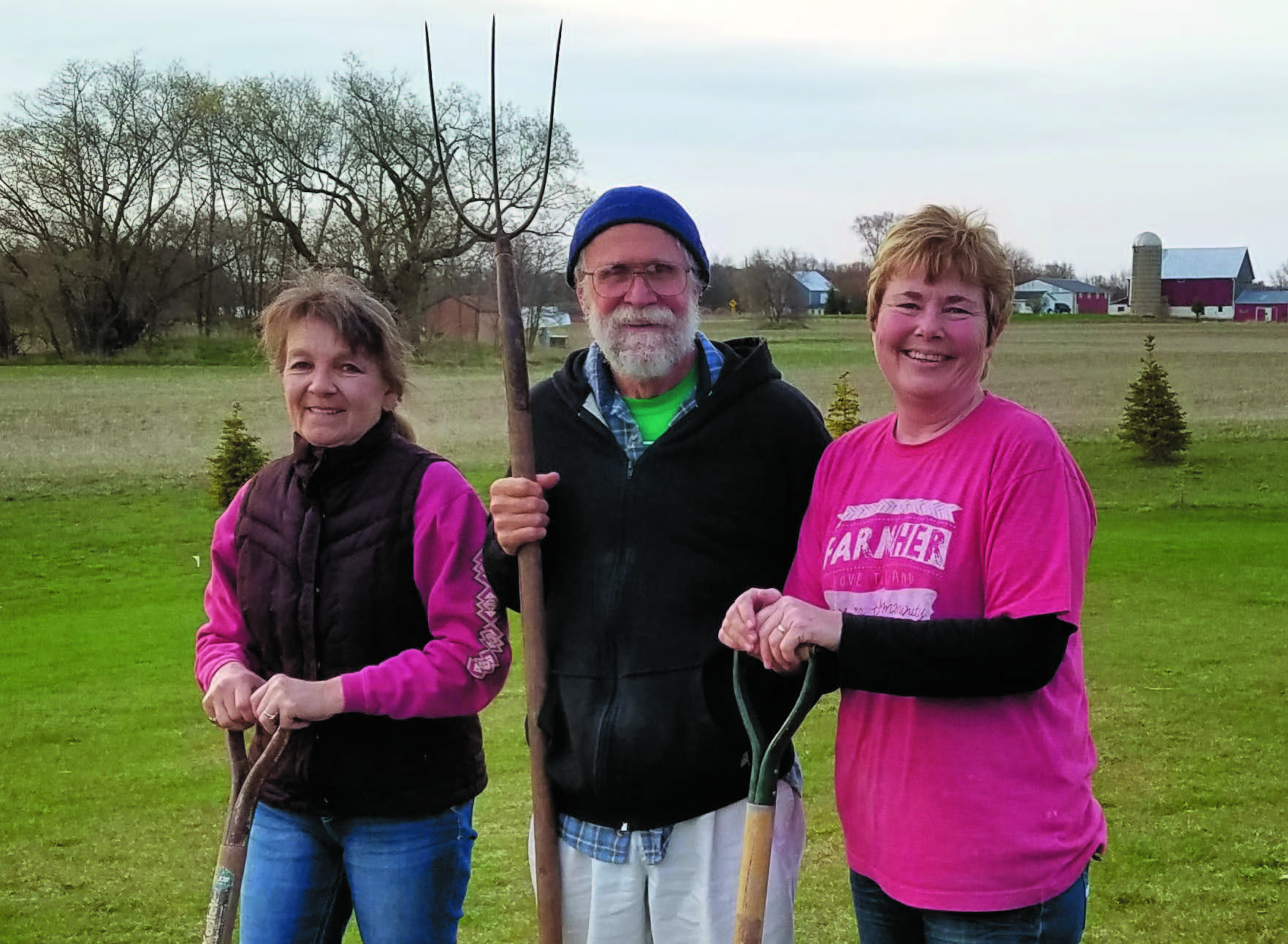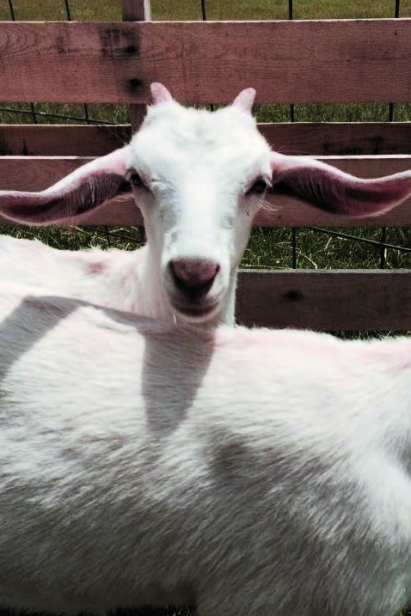Keeping Small Farms & Small Communities Alive
RURAL ENTERPRISE NET WORK HAS ITS ROOTS IN LITTLE LINCOLN
A Kewaunee County-based organization is fostering sustainable ru- ral businesses with a focus on helping small farms succeed.
“The world is a better place with smaller farms. Here, in our geo-region, it’s better for tourism. It’s better for our environment. It’s better for our economy,” says Jodi Parins, board member of the Rural Enterprise Network (REN).
The five-year-old REN educates farmers and connects them with consum- ers. It also raises public awareness and advocates legislatively for family farms. The community organization sprang up after the same comments came up at many town meetings in the Town of Lincoln. In October 2013, Mick Sagrillo, chairman of the Lincoln plan commission, was inspired to bring
together some of the most passionate speakers.
Sagrillo recalls telling them, “I’m tired of hearing people complain. Let’s do something positive. Let’s turn this into something positive. It’s easy to grouse. It’s easy to complain. It’s easy to throw stones, but that doesn’t get anywhere.”
“While the genesis came out of town board meetings, you know, be- cause that’s where people gather and commiserate and talk, it’s not affili- ated with the town,” Sagrillo clarifies.
Rural Enterprise Network’s six member board is made up of Parins, Sagrillo, Susy Vania, Sandy Winnemueller, Lynda Cochart and Cory Cochart. “All of us independently had seen the small family farms and the rural businesses leaving the area much to our chagrin,” Parins said. “We weren’t happy with how the fabric of the community was changing.”
As the group discussed the need in Lincoln, they realized that many of these were economic development issues and reached far beyond their town. Throughout the country, small farmers are struggling to retain their position in the market and keep the land that has been in their families for years. Agriculture is a major industry and small farms have a challenge to keep up with a competitive market.
“People would come to us and say, ‘I’ve been a dairy farmer all my life. That’s all I’ve ever known. But I can’t do that anymore. I’m not competitive. So, what can I do?’” Parins said.
When small family farms lose their business, it impacts the entire community.
“The trickle-down effect is huge,” Parins said. “Those are families that shop in our stores and eat at our restaurants. Their kids are in our schools and they attend our churches. When families are no longer able to farm, you can just drive around this area and see the empty farmhouses.”
THE FARMER-CONSUMER BOND
REN wants to provide farmers in Kewaunee County with options and al- ternatives. It offers resources for transitioning to organic, suggests cover crops and connects farmers directly with consumers.
Since 2014, REN has partnered with expert organizations including the University of Wiscon- sin-Extension, Natural Resources Conservation Service, and Midwest Organic and Sustainable Education Service to provide workshops on alternative methodologies and crops. Recent topics have included transitioning to organic crops, soil health, the importance of cover crops and how to make your small farm profitable.
“We’re just making sure that people know that there are alternatives and where they can come to learn about them. [REN] is all about making connections, making relationships,” Parins said. “Farmers can make a better living. People can have healthier food to eat and it’s better for the environment. It’s more sustainable.”
According to Vania, shopping and eating lo- cal is a win-win situation. When consumers buy their food directly from small family farms, they support their friends and neighbors. It keeps the money in the community. It also gives them more control over the food they eat.
“I wholeheartedly believe in knowing your farmer,” Vania said. “You should know and un- derstand their practices.”
Parins explains that even smaller farmers might use chemical sprays or practices that you don’t understand or like. Knowing how your farmer raises their livestock or plants allows you to bet- ter understand the food going into your body.
“The quality of your meat depends on what your steer was fed. This is why you get to know your farmer,” she said. “It’s like shopping for fine wine. Understanding what ground that grape was grown in is like knowing what your farmer is feeding that steer or hog. That’s the taste that you’re going to get in your meat when buying it locally. That’s why you see a lot of res- taurants up in Sturgeon Bay have a lot of local producers on their menu. They’re buying from the local vendors and there’s a marked differ- ence in the taste.”
However, the general consumer does not know a farmer. They want access to farm fresh produce and livestock, but there are obstacles to getting it.
“The trend is that the consumer is more dis- cerning,” Parins said. “They want good organic foods, but it takes time to find them. We have to come up with a way to get the good nutritious food to the consumer more easily.”
KEWAUNEE FARMERS MARKET
In the summer of 2014, REN created a farm- ers market that was focused solely on sustain- ably raised, local food. The Kewaunee County Farmers Market formed in partnership with the now-closed Flying Pig Gallery and Green Space in Algoma. The market ran for three years, with over 5,000 visitors each year.
The market was so successful that REN has now passed it on to the Algoma Area Chamber of Commerce. With the closing of the Flying Pig, the chamber offered to take over the farm- ers market, provide a new location for it and ex- pose new consumers to sustainable, fresh food.
The organization feels that eating locally grown food is as important to families as it is vital to the survival of the small townships like Lincoln. “One of the arguments for organic food is that you can pay for it now or you can pay for it later,” says Vania, referencing the controver- sies around genetically-modified organism, or GMOs and the potential future health-care costs. “People look at food in a major grocery store and say, ‘Oh, this is cheap. Let’s get this.’ They don’t have a clue that in the long run they are going to be paying a lot more than that cheap price.”
However, they admit it’s not a perfect fit for ev- ery family. Farm-fresh food can be more expen- sive than groceries from large-scale producers.
“If you’re a mother of three who is just trying to make ends meet, how could you justify a $5 gallon of organic milk versus a $2 gallon of milk? That’s a tough decision to make,” Parins said. “But they should start somewhere.”
For a long time, it was rather difficult to buy direct from local farms. However, in the past de- cade, farmers markets, CSAs, and other meth- ods are making farmers more visible and more accessible.
“Up here, people have the access [to farmers] even if they are vacationers or have a second home up here. They have access to affordable, fabulous food. They can buy a quarter of a steer and basically pay approximately $3.30 a pound. With that, you’re getting steaks, and roasts, and about 90/10 ground beef,” says Parins. “You might have to go and buy a small freezer, but that small freezer pays for itself the first year. So, it’s way more affordable to buy and the flavor and quality is incredible.”
Consumers have several options for con- necting with farmers. The farmers markets are a good place to go to ask around for beef and poultry sellers. Even if someone is just selling produce, it’s possible to ask for contacts to livestock farmers. The Rural Enterprise Network Facebook page is another resource for match- ing farmers with the public.
“We are very passionate about protecting the local economy,” says Sagrillo. “We just want our community to succeed.”






